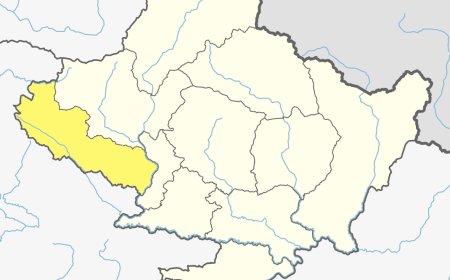The Rise of Sustainable Fashion: A Green Revolution in the World of Style
Explore the green revolution in fashion with our in-depth article on the rise of sustainable fashion. Uncover its origins, environmental impact, and the future of eco-friendly style. Join the movement towards a more conscious and responsible approach to fashion.

In recent years, the fashion industry has undergone a transformative shift towards sustainability, responding to the increasing global concern for environmental issues. This article delves into the various facets of the rise of sustainable fashion, exploring its origins, impact on the environment, consumer trends, and the future of eco-friendly style.
The Roots of Sustainable Fashion
Sustainable fashion, a term encompassing ethical and environmentally conscious practices, has its roots in the mid-20th century. The initial emphasis was on fair labor practices, but as climate change became a pressing issue, the industry expanded its focus to incorporate environmentally sustainable processes.
-
Historical Evolution:
The concept of sustainable fashion gained momentum in the 1970s and 1980s with the rise of eco-conscious movements. However, it wasn't until the 21st century that it truly became a mainstream phenomenon. -
Key Drivers:
The surge in sustainable fashion can be attributed to various factors, including heightened awareness among consumers, advocacy by influential figures, and a growing understanding of the environmental impact of traditional fashion practices.
Environmental Impact of Traditional Fashion
Before delving into the rise of sustainable fashion, it's crucial to understand the detrimental effects of conventional fashion practices on the environment.
-
Fast Fashion:
Fast fashion, characterized by rapid production cycles and inexpensive clothing, contributes significantly to environmental degradation. The overconsumption of cheaply made garments leads to increased waste in landfills. -
Textile Industry Pollution:
The textile industry is one of the largest contributors to water pollution globally. The use of toxic dyes and chemicals in conventional textile production poses severe threats to aquatic ecosystems.
The Sustainable Fashion Movement
-
Ethical Production Practices:
Sustainable fashion prioritizes fair labor practices, ensuring that workers receive fair wages and operate in safe conditions. This shift addresses the human rights concerns associated with traditional fashion manufacturing. -
Eco-Friendly Materials:
The use of organic and recycled materials has become a hallmark of sustainable fashion. From organic cotton to recycled polyester, designers are increasingly choosing materials that have a reduced environmental impact. -
Circular Fashion Economy:
The concept of a circular fashion economy aims to minimize waste by designing products with a focus on recyclability and reusability. This approach challenges the traditional linear model of 'take, make, dispose' that dominates the fashion industry.
Consumer Trends in Sustainable Fashion
-
Growing Consumer Awareness:
Modern consumers are increasingly informed about the environmental and ethical implications of their purchasing decisions. This awareness has led to a surge in demand for sustainable fashion options. -
Influence of Social Media:
Social media platforms play a pivotal role in promoting sustainable fashion. Influencers and celebrities advocating for eco-friendly brands contribute to the widespread acceptance of sustainable fashion among diverse demographics.
Challenges and Opportunities
-
Challenges in Adoption:
Despite its growth, sustainable fashion faces challenges, including higher production costs and the need for widespread industry adoption. Balancing affordability with ethical and eco-friendly practices remains a delicate challenge. -
Opportunities for Innovation:
The challenges present opportunities for innovation. The fashion industry is witnessing the emergence of groundbreaking technologies and practices that have the potential to redefine how clothing is produced and consumed.
The Future of Sustainable Fashion
-
Technological Advancements:
The integration of technology, such as blockchain for supply chain transparency and 3D printing for sustainable garment production, is paving the way for a more technologically advanced and sustainable future. -
Collaborative Industry Efforts:
The future of sustainable fashion relies heavily on collaborative efforts within the industry. Brands, manufacturers, and consumers are recognizing the importance of working together to create a more sustainable and responsible fashion ecosystem. Initiatives like the Fashion Revolution movement aim to bring stakeholders together, fostering transparency and accountability.
The Role of Legislation and Certification
-
Legislative Initiatives:
Governments and international bodies are increasingly recognizing the need to regulate and promote sustainability in the fashion industry. Legislative initiatives are being explored to enforce ethical production standards, reduce waste, and encourage the adoption of eco-friendly materials. -
Certification Programs:
Certification programs, such as Fair Trade and Global Organic Textile Standard (GOTS), play a crucial role in validating sustainable practices. Consumers are more likely to trust and support brands that carry recognized certifications, fostering a sense of assurance in their sustainable choices.
Lifestyle Shifts Beyond Fashion
-
Sustainable Living:
The rise of sustainable fashion is part of a larger shift towards sustainable living. Consumers are extending their eco-conscious choices beyond clothing, incorporating sustainable practices into various aspects of their lifestyles, from home goods to food choices. -
Impact on Beauty and Cosmetics:
The principles of sustainability are permeating the beauty and cosmetics industry as well. Consumers are increasingly seeking eco-friendly and cruelty-free beauty products, creating a ripple effect that encourages brands to adopt more sustainable practices.
Global Impact and Cultural Exchange
-
Localized Sustainable Practices:
Sustainable fashion isn't limited to Western markets. Around the globe, local artisans and traditional crafts are gaining recognition for their sustainable practices. Supporting these communities not only contributes to environmental conservation but also fosters cultural exchange and preservation. -
Influence on Global Fashion:
Capitals Fashion capitals like Paris, Milan, and New York are witnessing a shift in their fashion weeks and events, with a growing emphasis on sustainable collections. Designers are increasingly integrating eco-friendly practices into their haute couture, setting new trends for the global fashion scene.
How Individuals Can Contribute
-
Mindful Consumerism:
Every individual can contribute to the rise of sustainable fashion through mindful consumerism. Making informed choices, supporting ethical brands, and prioritizing quality over quantity are steps towards a more sustainable wardrobe. -
Advocacy and Awareness:
Beyond personal choices, individuals can advocate for sustainable fashion by spreading awareness. Sharing information on social media, participating in discussions, and supporting initiatives that promote sustainability contribute to the broader movement.
Conclusion:
The rise of sustainable fashion represents not just a trend but a pivotal shift towards a more conscious and responsible industry. From its historical roots to the challenges and opportunities it faces today, sustainable fashion is reshaping the way we approach style and consumption. As technology, consumer awareness, and collaborative efforts propel the movement forward, the future holds the promise of a fashion industry that is not only stylish but also sustainable, ethical, and environmentally friendly. Embracing the green revolution in the world of style is not just a choice; it's a statement of commitment to a more sustainable and harmonious planet.
What's Your Reaction?





































































































